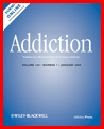 Ethanol-Sensitive Brain Regions in Rat and Mouse: A Cartographic Review, Using Immediate Early Gene Expression
Ethanol-Sensitive Brain Regions in Rat and Mouse: A Cartographic Review, Using Immediate Early Gene ExpressionAlcoholism: Clinical and Experimental Research Published Online: 19 Mar 2009
The review sheds light on the specific patterns of response in regions of the brain to different types of ethanol exposure and shows that activation of specific brain regions may occur in particular phases of the development of ethanol addiction. Some brain regions respond consistently following acute or chronic treatments or withdrawal: the prefrontal cortex; nucleus accumbens; lateral septum; hippocampus; perioculomotor urocortin-containing cells population (pIIIu), also known as Edinger-Westphal nucleus; central nucleus of the amygdale; and the paraventricular nucleus of hypothalamus. The two last brain areas are particularly activated by relapse-inducing stressors. It is of interest that the amygdala, hippocampus, and prefrontal cortex, which belong to the reward system, are activated by cue-induced relapse to ethanol self-administration in rodents and humans, while activation of these regions is reversed with anticraving compounds. Following chronic exposure, IEG induction desensitizes while withdrawal reactivates these regions.
Some responding regions are implicated in reward related processes (VTA, extended amygdala, hypothalamus, hippocampus, prelimbic cortex, ventral part of lateral septum) and some others in aversive-related processes (area postrema, nucleus of solitary tract).
__________________________________________________
 The Alcohol Use Disorders Identification Test (AUDIT) as a screening instrument for adolescents
The Alcohol Use Disorders Identification Test (AUDIT) as a screening instrument for adolescents



































